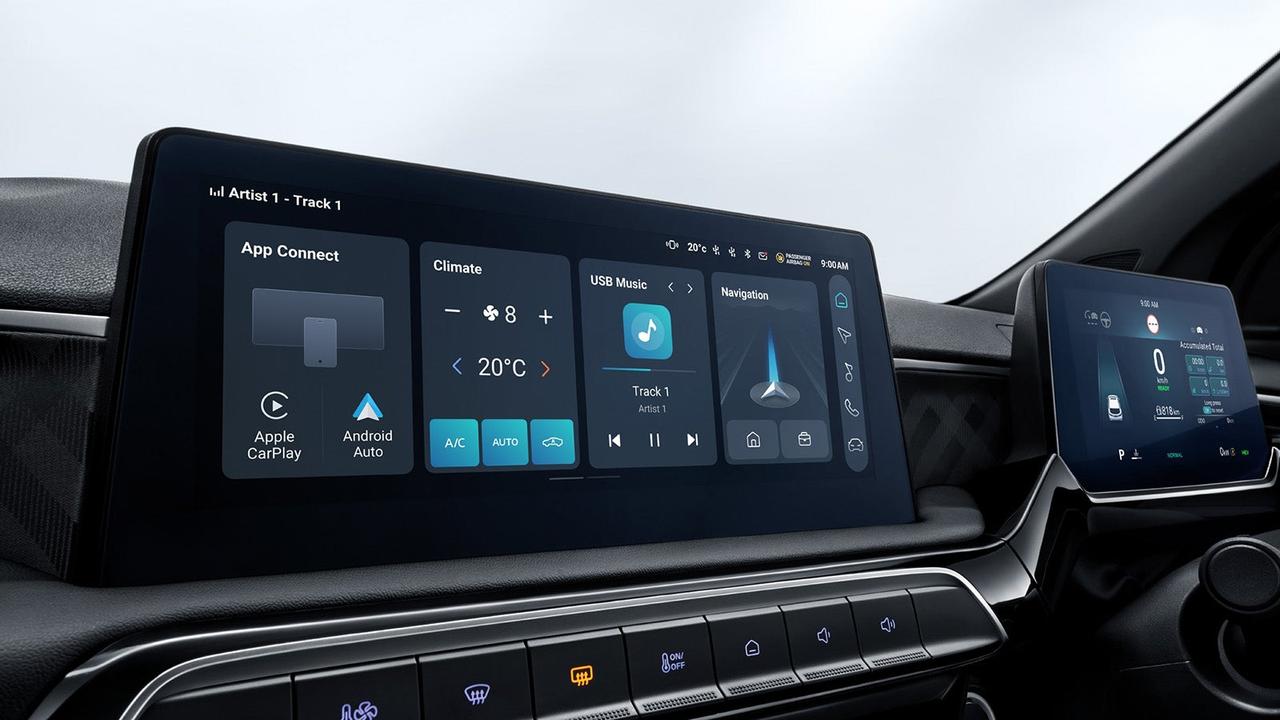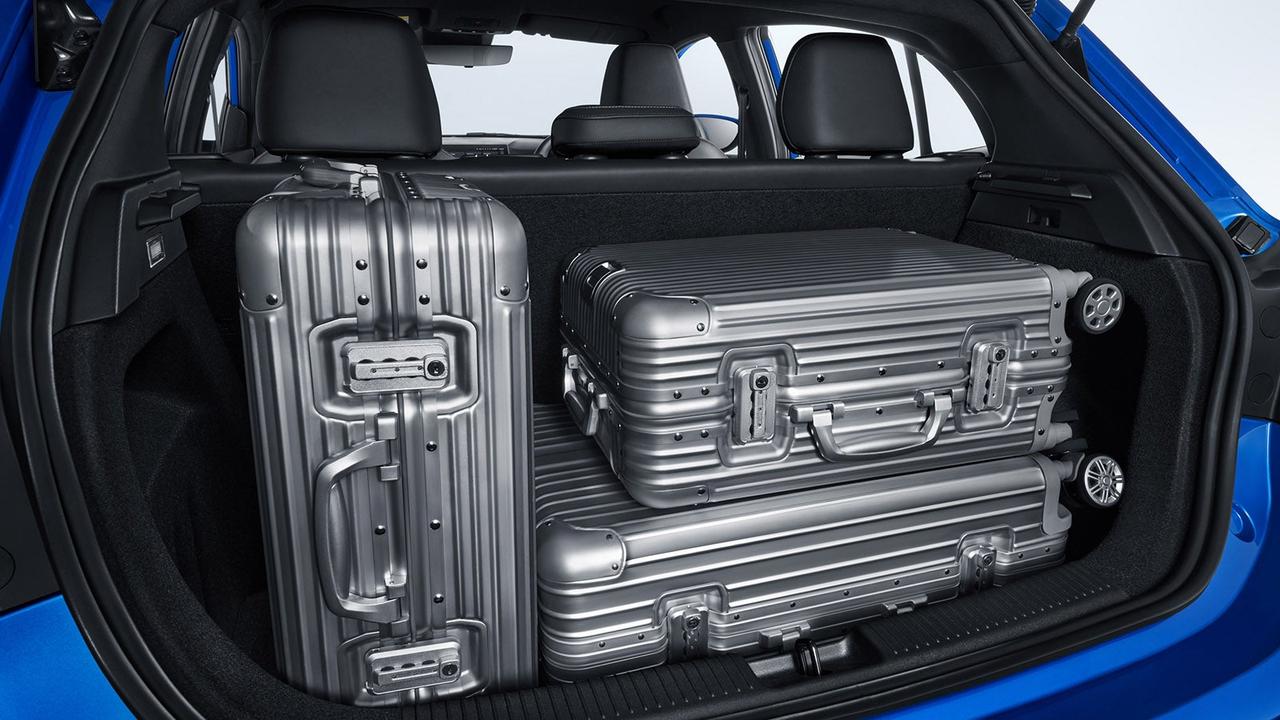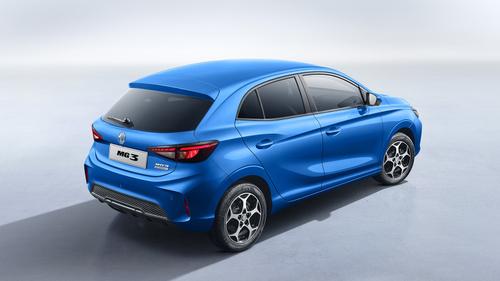











MG3 Review

Older MG3 models were never that much of a concern for the best-in-class hatchbacks. They were underwhelming in nearly every area, with their only real saving grace being their super-low prices.
The latest MG3, however, totally flips the script – launching itself right to the top of the class in just a single model generation. Keep reading to find out why this high-tech hybrid deserves a place on your shortlist.
- Hybrid engine is excellent for everyday driving
- Lots of standard equipment
- Cheaper than key rivals
- Occasionally laggy accelerator pedal
- A couple of cheap cost-cutting measures
- So-so styling
Should I buy an MG3?
The list of reasons to buy the previous-generation MG3 was pretty short. Beyond a price tag that sat several thousand pounds below equivalent rivals, it didn't compete with the best in class. Nor did it really stand out against affordable alternatives like the Suzuki Swift or Citroen C3.
…judicious use of soft-touch materials on the dash and door panels helps the car avoid the 'bargain-basement' feeling of its predecessor.
Imagine our surprise then, after stepping out of the latest MG3, to find that it's become one of the very best models in its class. Not just that, but this is now a hybrid hatchback with its sights set on smarter rivals like the Toyota Yaris and Honda Jazz, so it has to be very good to play in this league.
Before we delve into the extensive upgrades MG's bestowed upon the new 3, it's important to point out that it hasn't forgotten its affordable roots. Despite graduating to the more expensive hybrid hatchback class, it's around £4,000 cheaper than the Yaris and a whopping £8,000 less than the Jazz at the time of writing. Even against the keenly priced Renault Clio E-Tech hybrid, the MG3 is around £3,000 less. Plus, entry-level MG3s match or beat all these cars for standard equipment.

Cabin quality has taken a marked step up for the 2024 MG3. Most of the important touch points are covered in soft-touch materials and it feels more obviously 'designed' than its predecessor – although it lacks the very conspicuously styled look you'll find in something like a Peugeot 208. On-board tech is impressive, too, with all models getting a big, clear touchscreen infotainment system atop the dashboard, with a secondary driver's screen behind the wheel.
For now, all MG3s feature a self-charging full-hybrid system under the bonnet, although a cheaper non-hybrid model is due to arrive later on. This setup is generally excellent and feels perfectly suited to the mixed driving tasks most MG3s will probably be used for. Total output between the 1.5-litre petrol engine and hybrid setup is 192hp, making it the fastest and most powerful hybrid hatch in this class. As we'll discover further down, however, the hybrid's overall drivability is more impressive than its outright performance.
Interior and technology

From the driver's seat, the new MG3 feels like a totally different car to its predecessor. Key touchpoints like the two-spoke steering wheel and rotary gear selector are lifted directly from the MG4 electric hatchback, and help the MG3 feel bang up to date.
There's also judicious use of soft-touch materials on the dash and door panels, which helps the car avoid the 'bargain-basement' feeling of its predecessor. Being very picky, the latest MG ZS uses a Tonka-Toy-like gear shifter, which we felt was more satisfying in the hand – hopefully MG will add this to the 3 in a future update. If you pick Trophy trim – £2,000 more than the entry-level car – you get part-faux-leather upholstery with heated front seats and a heated steering wheel.
The 10.25-inch central infotainment screen is sharp and clear, with persistent on-screen shortcuts down the one side, plus extra physical shortcut buttons beneath. MG's resisted the temptation to overload the screen with graphics, icons and text. Instead, carefully presenting the important information and options in a way that's easy to read and understand at a glance. Rival cars – like certain Volkswagen and Mercedes models – cram too much on screen, which means it takes longer to pick out the bits you're looking for.

For all its virtues, you probably won't end up using the MG's built-in software much anyway, since Apple CarPlay and Android Auto are included as standard. There's also a handy spot behind the front cupholders to store your phone, right next to the car's USB-A and USB-C plugs.
It's a bit disappointing that MG has fallen for the modern fad of ditching physical climate controls in favour of on-screen buttons. There is, at least, an obvious shortcut button on the dash to send you straight to the climate menu, plus shortcuts for front and rear defrosters, but it's still not as intuitive as proper buttons.
The seven-inch driver's screen is less successful in our opinion. It gets the basics right – your speed is front and centre, and there's a good contrast between the dark background and the pin-sharp on-screen text. However, we reckon the Tesla-style ADAS graphic that shows ghostly images of vehicles around you is pretty pointless, not least because it could distract from actually looking at the road ahead of you. It also took us a second or two to spot the tiny indicator that showed whether the brake auto-hold function was active.
Practicality

Considering the many stand-out areas on the MG3's report card, its practicality is merely average for the class. Space up front is fine and there's enough adjustability in the seats for tall adults to get comfortable – with one caveat. MG's omitted reach adjustment from the steering wheel, leaving it with just up-and-down rake adjustment. This means you may have to sit either more upright or more leant back than you'd normally like depending on how long your arms are. Most people will be able to find a compromise that works, but it feels like one cost-cutting measure too far.
Between the front cupholders, door bins and glove box, you'll be able to stash all your odds and ends if you're tackling a longer journey. MG's also fitted a centre armrest as standard so you can assume a more comfortable position for motorway slogs. This, conveniently, serves the dual purpose of somewhat covering the centre console tray, the lid of which feels about as robust as damp papier-mâché.
Rear space is, like most superminis, not especially impressive. You'll have to compromise everyone's legroom if you want to seat tall adults in both the front and rear rows. Single or couple buyers who occasionally give the odd lift to friends or relatives will be fine but, if you're carrying regular rear-seat passengers, you'll be better off with a bigger car. This is also true for most of the MG3's rivals, but the Skoda Fabia and SEAT Ibiza make better use of their similarly sized footprints, while the Honda Jazz has a simply ludicrous amount of passenger space given its small stature. There is a fifth centre-rear seat in the MG3 but your rear passengers will be fighting over elbow room if you actually use it.

If it wasn't already clear from the tight back seats, the 293-litre boot means the MG3 isn't a good choice as a family car. You'll struggle to get a pushchair in the cargo area, although a big shopping trip or couple's holiday luggage shouldn't prove too taxing. The space itself is usefully square and access is fairly easy although, again, rivals like the Fabia and Jazz are better still.
Folding the rear seats reveals a 983-litre space, which should be enough for the odd bit of serious load lugging, but also reveals another disappointing cost-cutting measure. MG's only fitted the 3 with a single-piece folding rear bench, where almost all rivals let you fold left and right sides individually in a 60/40 split. This means you get either all five seats and a small boot, or just two seats and a big boot, and miss out on the flexibility of folding just the one side for three or four seats.
Engines and performance

While MG will add a more affordable petrol engine to the range later on, for now there's just one self-charging full-hybrid setup available. That means you get a 1.5-litre, four-cylinder petrol engine making 101hp and an electric motor with 100kW (134hp) working together in tandem. It's automatic only and, since it's a self-charging hybrid, there's no faffing around with charging.
In mixed driving, MG reckons you'll be able to average 64mpg – more-or-less the same figures you'll find in the Honda Jazz and Toyota Yaris. It's worth pointing out, however, that the MG3 is a bit quicker than its Japanese rivals with the combined output of its engine and motor standing at an impressive 192hp – more than you get in a Mini Cooper S.
If you're a driving enthusiast and your ears pricked up at the sound of that healthy power number, you should temper your expectations. The MG3 doesn't quite feel as quick as that number suggests, with its fairly middling eight-second 0-62mph time being more representative of its respectable but hardly excessive performance. Plus, you're only going to achieve that time if you absolutely bury the accelerator into the carpet, which is accompanied by a fairly harsh drone from the engine as it struggles to keep pace.

Forget outright performance, however, and just drive the MG3 as a normal car and the hybrid setup shines. The 134hp electric motor is the star of the show, letting the MG3 glide away effortlessly from a stop, or giving you an extra boost of instant acceleration when nipping through traffic. Its 1.83kWh battery pack means you won't be travelling long distances on electric power alone, but it's the largest of any full-hybrid in this class, allowing the electric motor to do most of the driving most of the time.
Press the throttle harder or head up to motorway speeds and the petrol engine wakes up to add its 101hp to the mix. We did notice the occasional bit of hesitance when suddenly mashing the accelerator pedal – almost as if the electric motor gives you everything it has and then you wait a second or two for the petrol engine to join in and take you to full power. Again, however, leave the MG3 to its own devices and just cruise around like normal and you'll rarely encounter this issue.
Driving and comfort

Like the engine, stick to regular driving and the MG3's handling will never bother you. Body control is pretty good and the car doesn't do anything unpredictable even when the suspension is loaded up mid-corner. It's easy enough to place on the road and you don't find yourself guessing how far you should be turning the steering wheel.
What it isn't is particularly fun. Rivals like the Ford Fiesta and Suzuki Swift reward keen driving with a sense of poise and agility the harder you push the car. In comparison, the MG3 offers just a bit of body lean and fairly inconsistent weighting through the steering, which doesn't encourage you to enjoy the car's handling.
Annoyingly, the MG3 doesn't fully excuse its lack of handling dynamism with a comfortable ride, which the rivalling Renault Clio and Peugeot 208 manage to achieve. It isn't uncomfortable – making a respectable effort to reduce the number of impacts and vibrations that make it to the cabin – but it's not quite up there with the class best. It is, at least, softer than the Yaris and Jazz, which are both a little more firmly sprung than we'd like.
Like all modern cars, the MG3 gets a suite of active driver aids including adaptive cruise control, automatic emergency braking, lane-keep assist, driver attention monitoring and speed limit recognition. We found these systems less intrusive in the MG than we have in some recent rivals, with fewer beeps and bongs to distract from the job of driving. You can still easily turn these systems off from the steering wheel, but you might find you don't need to in day-to-day use.


















































